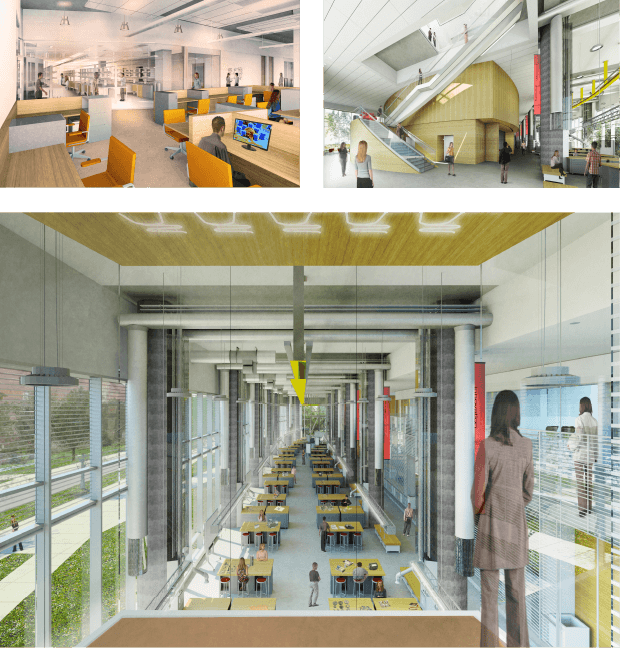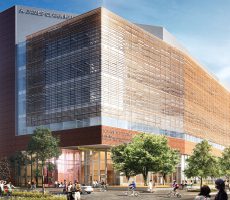- February 07, 2015
- By Lauren Brown
Biodegradable heart valves made from 3-D printers. Surgical robots that can remove tough-to-reach brain tumors. Drug delivery systems that can prevent recurrence of malaria.
Research and innovations in these lifesaving areas, already under way in the A. James Clark School of Engineering, are expected to dramatically expand with the construction on campus of a building focused on the booming fields of bioengineering and biomedical device development.
The university held a ceremonial groundbreaking in November at the future site of A. James Clark Hall, next to the Jeong H. Kim Engineering Building. At 184,000 square feet, it will house labs, classrooms and meeting and maker spaces that will bring together students, faculty, medical practitioners, entrepreneurs and regulators to design and build the next generation of health-care technologies, then get them into the marketplace.
“Engineers have the unique opportunity to innovate and design novel solutions and products that improve millions of lives—an opportunity that will be further realized with A. James Clark Hall,” says Darryll Pines, dean of the college and Nariman Farvardin Professor.
The $126 million building is made possible through gifts from two of Maryland’s most prominent benefactors. Engineer and construction executive A. James Clark ’50 has given $15 million; previous support includes a $15 million gift to the engineering school in 1994 that bears his name and $30 million in 2003 for undergraduate scholarships. Clark Hall will be the 27th structure built by Clark Construction on the UMD campus.
He was unable to attend November’s groundbreaking ceremony, but his daughter, Courtney Clark Pastrick, said this building is a “great leap forward” for his vision: “My father fervently believes that the future of modern medicine hinges on bioengineering, and his generosity ensures that the Clark School will have a magnificent point to incubate this research.”
Bioengineering pioneer Robert E. Fischell M.S. ’53, honorary Sc.D. ’95 has committed $6 million; his more than 200 medical patents include the first implantable insulin pump and the modern heart stent.
“We look forward to some great work in this department to make 100 million people better by what the engineers, students and faculty will do in this new building,” Fischell said at the ceremony.
Both the Fischell Department of Bioengineering and the Robert E. Fischell Institute for Biomedical Devices, launched in 2005 by a $31 million gift from Fischell and his three sons, will move into Clark Hall.
The building will unite the many disciplines on campus involved in human health innovation, including biology, information technology and electrical and mechanical engineering.

It is expected to boost the state’s economy through workforce training and biomedical startups, while making more room for the ballooning bioengineering program. Since its 2006 founding, the undergraduate program has grown to 414 students and is now UMD’s fastest-growing department.
The building, scheduled to open in 2017, will feature flexible classrooms and labs to spur an organic flow of ideas between disciplines. Other features include optical and imaging labs focused on digital fabrication, rapid prototyping, 3-D printing, optics and bioinformatics.
“We needed to be able to provide a place for students to have great educational opportunities, great interaction capabilities with the Food and Drug Administration and with the University of Maryland School of Medicine,” says department chair William E. Bentley, “and this will be a huge outcome of this building.”
See more on Clark Hall and take a virtual tour at eng.umd.edu/clarkhall.
